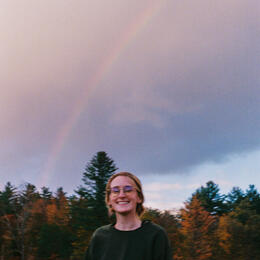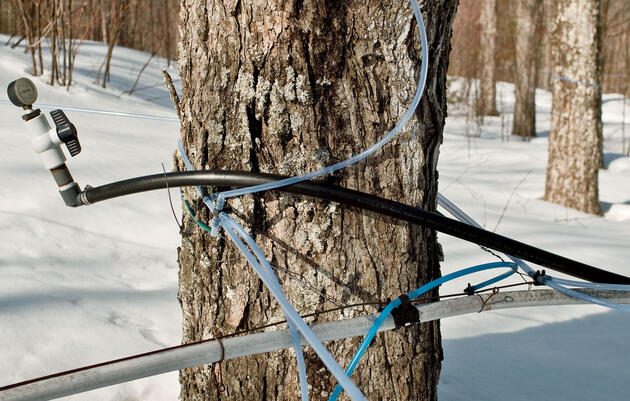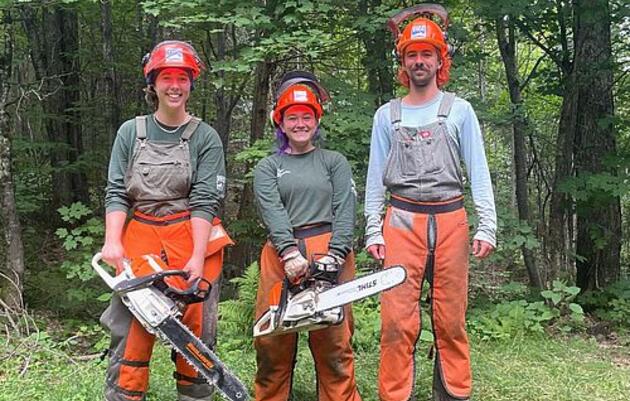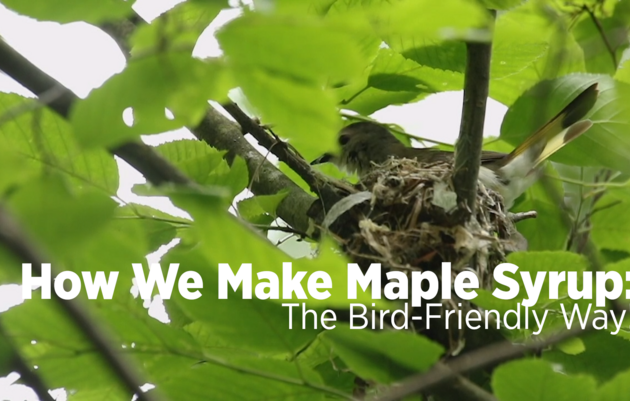This summer I’ve been lucky enough to have a behind-the-scenes look at one of the ways Vermont is unique: maple syrup. I had the chance to walk the woods with the people who have been working in them for generations. I learned how their sugarbushes have evolved over the years and how much hard work it takes to produce syrup, especially with the challenges of climate change. Growing up in the South, I never had the opportunity to see how much thoughtfulness and community go into the process of making the syrup I love so dearly (I’ve already started planning my Maple Open House Weekend!). This was an entirely new world to me, and this summer I spent every second soaking up the knowledge of Vermont’s sugarmakers. Something I quickly learned, is that even sweeter than maple syrup are the people who make it.
Just to emphasize how crucial maple syrup is to Vermont, let me share some figures with you. The state of Vermont is comprised of 78% forests (roughly 4.5 million acres) and 2.7 million acres of that is privately owned wooded land (Vermont Woodlands Association). We don't have an official number of acres of sugarbush, but we do know that over half of the syrup in the United States is produced in Vermont, making our little state the #1 producer in the country since 1916. In 2023, Vermont produced 4.18 million gallons of syrup (USDA) and since we're in the midst of the summer Olympics, that could fill SIX Olympic-sized swimming pools! These numbers come from a wide range of producers, from small family-owned backyard operations to major industrial-sized productions. This makes clear that every sugarmaker in Vermont is important when considering the health of our forests and the birds that inhabit them.
With over half of Vermont's forests are privately owned, the way sugarmakers manage their land can impact areas beyond their property boundaries. Maple syrup is a unique crop because it is harvested from a growing forest. When I considered these two factors, it became clear to me that Vermont's landscape is shaped by sugarmakers. During the early 1900s, abandoned pastures started appearing across the landscape because of the transition from sheep to dairy farming. This led to fields being reclaimed by various trees, with the sugar maple being particularly prevalent. The shift in land use caused an increase of sugarmakers, hence the beginning of Vermont's sugaring legacy. During my summer at Audubon, I began to meet some families that have been producing for multiple generations spanning 100 years! The sugarmakers I met have opted into Audubon's Bird-Friendly Maple program, which recognizes them for their efforts to create a diverse and desirable habitat in their woods for migrating birds.
My time with Audubon as a Bird-Friendly Maple Intern required me to walk the lands and take sample plots in the sugarbush, and though not required, most sugarmakers would join me in the field for the assessment. Vermont sugarmakers welcomed this outsider with open arms - by sharing the history of the land, walking me through their sugarhouses, and even sharing sweet tokens of their hard work. In turn, I would tell them how their forests support birds. "See that canopy gap over there? Flycatchers like the Eastern Wood-Pewee will use that area to swoop down to catch flying insects. The dense understory of hobblebush here is great for a bird like the Black-throated Blue Warbler who will make their nest here." The producer was so excited about all the birds we heard singing in the forest and offered me some maple-wisdom as we continued walking. "We tapped this section of trees in a way that leaves a corridor for wildlife to migrate through without damaging the tap lines. My great grandfather built this sugarhouse in the early 1900s, using wood that came from this land, and this is how we've modernized it." They explained the science, math, and machinery behind it all, as well as how a single tree can affect the whole operation. They told me stories of how their neighbors would come to help boil sap when they were in a pinch and how they had to update their production out of necessity to keep up with the changing climate.
But the underlying theme of all the sugarmakers I met was how proud they were of their syrup and their passion for maintaining their forests to ensure sustainable tapping for generations to come. My purpose in the woods was to inform the sugarmakers about how their forest is and could support birds during migration season. However, I never anticipated learning how maple syrup can connect the community, give a sense of purpose, and show the resilient spirit of sugarmakers. I feel so grateful to have spent my summer with Audubon Vermont, not only to hone my skills as a forester for the birds, but also to meet this incredible community of sweet sugarers.
You can learn more about Audubon Vermont's Bird-Friendly Maple Project here.
Buy Bird-Friendly Maple made at the Green Mountain Audubon Center here.









